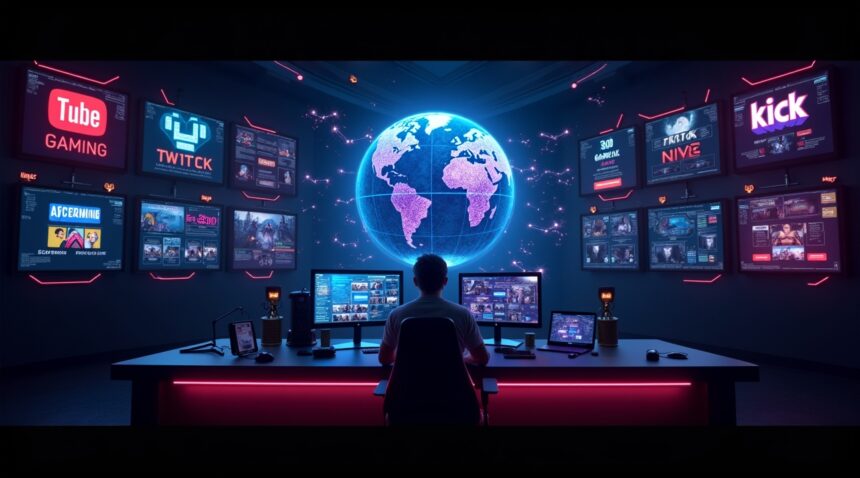YouTube and Twitch fundamentally transformed the gaming industry by creating a $9.3 billion global gaming content economy that reaches 1.2 billion viewers worldwide.
These platforms established streaming and content creation as legitimate career paths with seven-figure earning potential. The revolution reshaped game marketing by shifting publisher strategies from traditional advertising to authentic creator partnerships. Gaming culture evolved from a primarily participatory activity to one where players now spend an average of 8.5 hours weekly watching gaming content.
Key Takeaways
- Economic Powerhouse Creation: YouTube and Twitch built a $9.3 billion gaming content economy by 2020, with platforms generating revenue through sponsorships, advertising, donations, and merchandise sales that can reach millions for top creators.
- Massive Platform Growth: Twitch exploded from 3.2 million users in 2011 to over 240 million monthly active users by 2025, while YouTube Gaming accumulated nearly 100 billion watch hours across 40 million active gaming channels.
- Cultural Shift in Gaming Consumption: Players now watch gaming content more than they play, averaging 8.5 hours weekly viewing time and developing strong parasocial relationships with creators, though only 11% make purchases based on creator recommendations.
- Publisher Marketing Revolution: Game companies shifted marketing budgets from traditional advertising to creator partnerships, recognizing that authentic gameplay demonstrations and influencer endorsements drive more engagement than conventional promotional methods.
- Emerging Platform Competition: TikTok Live surpassed Twitch in total watch hours during Q1 2025 with 8 billion hours, while newcomer Kick gained 863 million watch hours, challenging established platforms and forcing adaptation in the streaming landscape.
YouTube and Twitch Drive $9.3 Billion Gaming Content Economy
Gaming video content has transformed from a niche hobby into a massive economic powerhouse, generating $9.3 billion worldwide by 2020. This astronomical figure reflects the fundamental shift in how audiences consume entertainment and how creators build sustainable businesses around gaming content.
The numbers tell a compelling story about this industry’s growth. A global audience of 1.2 billion viewers actively engages with gaming content across various platforms, creating an ecosystem that rivals traditional entertainment industries. Twitch currently leads in global gaming video platform revenue, establishing itself as the premier destination for live streaming content. YouTube maintains substantial influence in this space, particularly excelling in long-form gaming content, tutorials, and highlights that complement Twitch’s live-streaming dominance.
Content Creation as a Lucrative Career Path
Gaming content creation has evolved far beyond casual hobby status, establishing itself as a legitimate career path with extraordinary earning potential. Top creators now command millions from sponsorships and advertising revenue, fundamentally changing how people view gaming as a profession. The financial opportunities available demonstrate the industry’s maturity and investment appeal.
Consider these key revenue streams that drive creator success:
- Brand sponsorships and partnership deals that can reach seven-figure agreements
- Platform-based advertising revenue sharing programs
- Subscriber donations and fan funding through various monetization tools
- Merchandise sales that leverage creator personal brands
- Tournament prize pools and competitive gaming earnings
A prime example of this earning potential emerged when Ninja received $1 million from EA to promote Apex Legends. This single deal illustrates the magnitude of financial opportunities available in gaming content, where major publishers invest heavily in influencer marketing. Companies recognize that creators like Dream and others can drive more engagement and authentic connections with audiences than traditional advertising methods.
Video game marketing has fundamentally shifted because of these platforms. Publishers now allocate substantial portions of their marketing budgets to creator partnerships, understanding that authentic gameplay demonstrations and reviews carry more weight with audiences than traditional advertisements. This approach has proven particularly effective for reaching younger demographics who increasingly consume content through streaming platforms rather than conventional media.
Revenue generation extends beyond individual creators to encompass entire ecosystems of talent agencies, production companies, and support services. These supporting industries have emerged to help creators maximize their earning potential while handling business operations, legal matters, and strategic planning. The professionalization of gaming content has created thousands of additional jobs in related fields.
Gaming influencers now wield tremendous power in shaping market trends and consumer purchasing decisions. A positive review or gameplay session from a popular creator can significantly impact a game’s success, leading to immediate sales spikes and long-term popularity. This influence has made creators essential partners for game developers and publishers seeking to reach target audiences effectively.
Career opportunities through gaming video content continue expanding as the industry matures. Traditional career paths like marketing, event management, and technical production now exist within the gaming content space. Educational institutions have begun offering specialized programs in streaming technology, content creation, and digital media management to meet growing demand for skilled professionals.
The economic impact extends beyond individual creators and companies to entire regions and countries. Gaming content hubs have emerged in major cities, creating local economies centered around streaming, content production, and related services. Countries like South Korea have invested heavily in gaming infrastructure, recognizing the economic potential of supporting this industry.
Platform competition between YouTube and Twitch has driven innovation and improved creator tools, ultimately benefiting the entire ecosystem. Features like enhanced monetization options and improved streaming technology have made it easier for creators to build sustainable businesses while providing audiences with higher-quality content experiences.
Twitch’s Meteoric Rise from 3.2 Million to 240 Million Users
I’ve witnessed Twitch transform from a niche gaming platform into a streaming powerhouse that fundamentally changed how people consume interactive entertainment. The platform’s journey began in 2011 with a laser focus on live gaming streams and eSports, starting with just 3.2 million monthly users who were hungry for real-time gaming content.
The numbers tell an extraordinary story of growth that few digital platforms have matched. By 2025, Twitch reached over 240 million monthly active users, representing a staggering increase that demonstrates the platform’s ability to capture and retain audiences worldwide. This explosive growth didn’t happen overnight – it built momentum through consistent innovation and strategic positioning in the gaming space.
Peak Performance and Engagement Metrics
The platform’s engagement statistics reveal the depth of user investment in live streaming content. In Q3 2023 alone, users consumed over 5.3 billion hours of video, while the platform peaked at 2.3 billion monthly hours in May 2021. These figures showcase not just popularity, but genuine audience dedication to the streaming experience.
Currently, Twitch maintains impressive daily metrics that highlight its consistent appeal. The platform supports more than 7 million monthly active streamers while averaging approximately 2.29 million concurrent viewers and 35 million daily active users. This balance between content creators and consumers creates a dynamic ecosystem where both sides drive continuous growth.
Strategic Acquisition and Market Dominance
Amazon’s 2014 acquisition of Twitch for $970 million proved to be a transformative moment that accelerated the platform’s development trajectory. This investment brought substantial resources and technological infrastructure that enabled Twitch to scale effectively while maintaining streaming quality across millions of simultaneous broadcasts.
The content landscape on Twitch reflects broader gaming trends, with League of Legends claiming the throne as the most-watched title, accumulating over 60.52 billion watch hours. This dominance mirrors the game’s global popularity and demonstrates how successful titles can create sustained viewing communities.
Geographically, the United States represents Twitch’s largest market, comprising nearly 25% of its user base. This concentration reflects both the platform’s origins and the strong gaming culture that exists in American markets. However, the remaining 75% of users spread across international markets shows Twitch’s global appeal transcends cultural boundaries.
Major streamers have become household names through the platform, with personalities like PewDiePie and Pokimane building massive followings that extend far beyond gaming content. These creators demonstrate how Twitch evolved from simple game streaming into a comprehensive entertainment platform where personalities matter as much as gameplay skills.
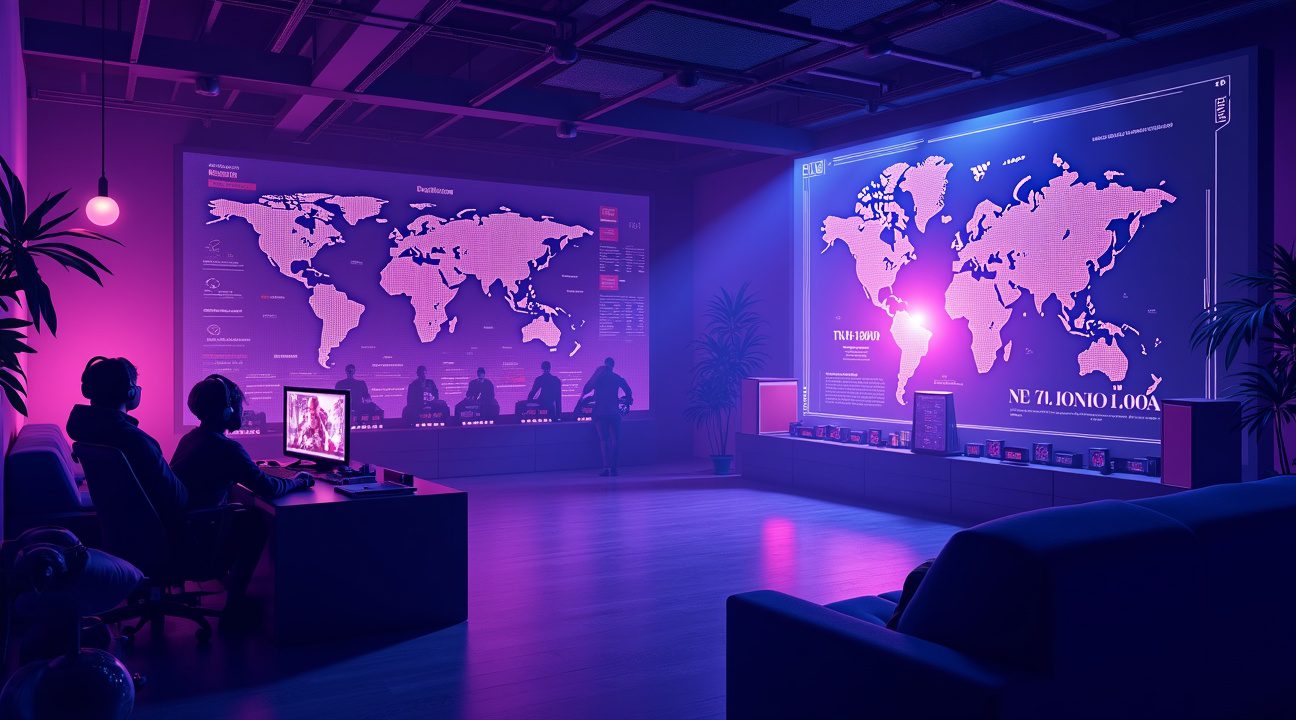
YouTube Gaming’s Cultural Revolution and 100 Billion Watch Hours
YouTube Gaming fundamentally transformed how people consume and interact with video game content. By 2020, the platform boasted over 40 million active gaming channels and nearly 100 billion hours of watch time, establishing itself as the dominant force in gaming entertainment and education.
From Entertainment to Education Hub
I’ve witnessed YouTube’s evolution from a music-centric platform into gaming’s primary educational resource. The platform cultivated a unique “how-to” culture where viewers actively seek content to improve their gaming skills. Players now routinely watch walkthroughs, speedruns, and detailed game guides before attempting challenging sections or purchasing new titles.
This shift created unprecedented opportunities for content creators. Influential streamers like PewDiePie and Dream built massive audiences by combining entertainment with practical gaming advice. Their success demonstrates how YouTube democratized gaming expertise, allowing skilled players to monetize their knowledge while helping others improve.
Companies quickly recognized YouTube’s marketing potential. Game developers now partner with creators for promotional campaigns, understanding that authentic gameplay demonstrations often prove more effective than traditional advertising. This influencer marketing approach has become essential for game discovery, with many titles gaining popularity through viral YouTube content rather than conventional marketing channels.
Building Communities and Parasocial Connections
YouTube Gaming fostered strong community formation around shared gaming interests. Popular content formats emerged organically:
- Walkthroughs that guide players through difficult game sections
- Speedruns showcasing expert-level gameplay and optimization techniques
- Tutorial series teaching specific skills or strategies
- Review content helping viewers make informed purchasing decisions
- Live commentary creating shared viewing experiences
These formats enabled creators to develop deep parasocial relationships with their audiences. Viewers feel personal connections with their favorite gaming personalities, often considering them friends despite never meeting. This phenomenon has proven particularly powerful in gaming, where shared experiences and common challenges create natural bonding opportunities.
The platform’s comment systems and community features allow real-time interaction between creators and fans. I’ve observed how successful gaming channels function as virtual communities where members share tips, celebrate achievements, and support each other through gaming challenges.
YouTube’s recommendation algorithm amplified this cultural shift by connecting viewers with relevant gaming content. The system learned to identify when someone needed help with specific games, serving up precisely the tutorials or guides they required. This created a feedback loop where successful educational content reached more viewers, encouraging creators to produce increasingly helpful gaming resources.
The platform’s impact extends beyond individual entertainment. YouTube Gaming has influenced game design itself, as developers now consider how their games will perform in streaming and tutorial content during the development process.
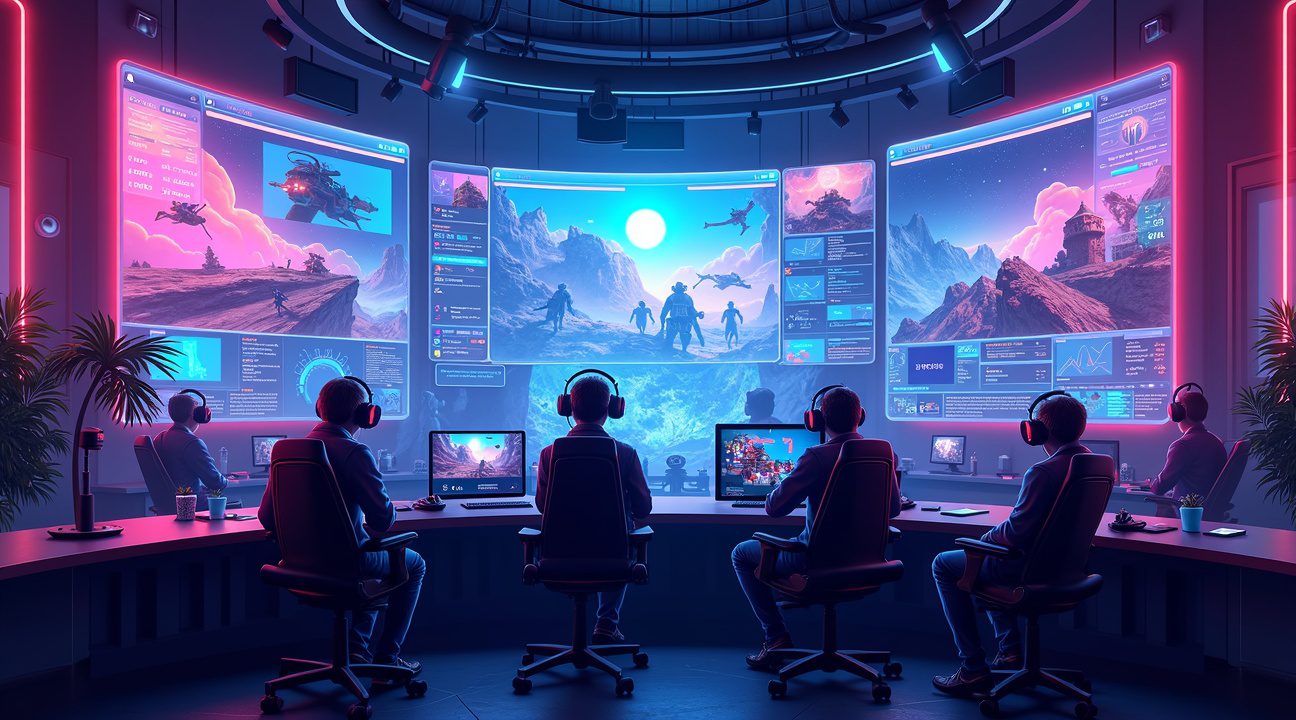
Gamers Now Watch More Than They Play: 8.5 Hours Weekly Viewing Revolution
Gaming consumption has fundamentally shifted. Players now dedicate an average of 8.5 hours weekly to watching gaming content across platforms like YouTube and Twitch—time that surpasses their actual gameplay sessions. This dramatic change signals a new era where observation rivals participation in the gaming experience.
The Rise of Parasocial Gaming Communities
Extended viewing hours create deeper emotional bonds between audiences and content creators. Viewers develop genuine connections with streamers, feeling as though they know them personally despite the one-way nature of the relationship. These parasocial connections drive sustained engagement and transform casual viewers into dedicated community members.
Successful creators understand this dynamic. They maintain consistent streaming schedules, respond to chat messages, and share personal stories that make viewers feel included. Pokimane’s departure from Twitch exemplified how creator decisions can deeply impact devoted audiences who’ve invested emotionally in their content.
The strength of these connections manifests in several ways:
- Viewers return to the same creators repeatedly, building viewing habits around specific personalities
- Chat participation increases as audiences feel more comfortable engaging with familiar streamers
- Subscription rates and donations rise when viewers feel personally connected to creators
- Communities form outside the platform through Discord servers and social media groups
- Fan loyalty persists even when creators take breaks or change content direction
Cultural Influence vs. Purchase Power
Content creators wield significant cultural influence over gaming trends and community discussions. They introduce new games to massive audiences, shape opinions about gaming companies, and create viral moments that spread across social media. YouTube’s ability to create cultural phenomena extends beyond children’s content into gaming spheres.
However, this cultural impact doesn’t directly translate to purchasing decisions. Research from 2023 reveals that only 11% of gamers make purchase decisions based on positive creator reviews. The percentage increases slightly among specific demographics—14% for PC gamers and 15% for console players—but remains surprisingly low given creators’ apparent influence.
This disconnect suggests viewers engage with gaming content for entertainment rather than shopping guidance. They watch streams for personality-driven entertainment, community interaction, and skill development rather than product recommendations. Major creators like MrBeast have leveraged this entertainment value to build massive audiences, though their influence on specific product purchases remains limited.
The attention economy operates differently than traditional advertising. Creators compete for viewer time rather than immediate sales conversions. Watch hours become the primary currency, with platforms rewarding content that keeps audiences engaged longest. Streamers adapt by creating longer-form content, interactive experiences, and serialized gameplay that encourages repeat viewing.
Gaming culture has evolved from a primarily participatory activity to a spectator sport. Viewers enjoy watching skilled players demonstrate techniques they couldn’t achieve themselves. They appreciate commentary that explains strategy, humor that entertains during downtime, and community interaction that provides social connection.
This shift creates new opportunities for creators who understand audience preferences. PewDiePie’s sustained popularity demonstrates how personality-driven content can maintain relevance across gaming trends. Similarly, controversial moments like Dream’s face reveal generate massive engagement regardless of their connection to actual gameplay.
Platforms respond to viewing patterns by promoting content that maximizes watch time. Algorithm changes favor creators who maintain audience attention, leading to content strategies focused on engagement metrics rather than game promotion. This creates a feedback loop where entertainment value supersedes product advocacy, explaining why cultural influence doesn’t correlate with purchase influence.
Battle for Streaming Supremacy: TikTok Challenges, Kick Surges, Twitch Plateaus
The streaming landscape has experienced a dramatic shift in 2025, with traditional powerhouse platforms facing unprecedented challenges from emerging competitors. TikTok Live achieved a remarkable milestone in Q1 2025, surpassing Twitch in total watch hours with an impressive 8 billion hours—representing a substantial 30% increase from the previous period. This explosive growth primarily stems from the platform’s dominance in IRL (In Real Life) content and mobile eSports streaming, areas where TikTok’s algorithm-driven discovery mechanism proves particularly effective.
Twitch, despite maintaining its leadership position in gaming and eSports streaming, faces concerning stagnation indicators. The platform recorded only 3.4% growth in Q1 2025, accompanied by a troubling 1-2% decline in both total hours watched and stream volume. These figures suggest that content creators are exploring alternatives as Twitch struggles to maintain momentum in an increasingly competitive environment.
Rising Competition and Market Dynamics
Kick has emerged as another significant disruptor, recording 863 million watch hours in Q1 2025 with an impressive 18% quarter-over-quarter increase. This growth trajectory positions Kick as a formidable third player in the streaming wars, particularly appealing to creators seeking better revenue splits and fewer content restrictions. The platform’s rapid ascension demonstrates how quickly market dynamics can shift when creators find more attractive alternatives.
YouTube continues to excel in its specialized niche, maintaining leadership in on-demand, edited content while complementing the live streaming ecosystem. The platform’s strength lies in its ability to serve both live and recorded content seamlessly, offering creators multiple monetization pathways that traditional streaming platforms can’t match.
Demographic Shifts and User Behavior
Platform demographics reveal interesting patterns that explain these competitive shifts. Current data shows 72-73% of users fall under 34 years old, with female representation reaching 35% in 2025—a significant increase that reflects gaming’s expanding appeal beyond traditional demographics. These younger, more diverse audiences gravitate toward platforms offering varied content formats and discovery mechanisms.
The competition extends beyond mere watch hours into community engagement quality. While Twitch retains advantages in live engagement and community-driven interactions, TikTok’s success demonstrates that discoverability and content variety increasingly influence platform selection. Creators like major YouTubers are weighing their options more carefully than ever, considering factors beyond just audience size when choosing primary platforms.
This shifting landscape suggests that platform loyalty isn’t guaranteed, and success increasingly depends on adaptation to creator needs and audience preferences rather than historical dominance.
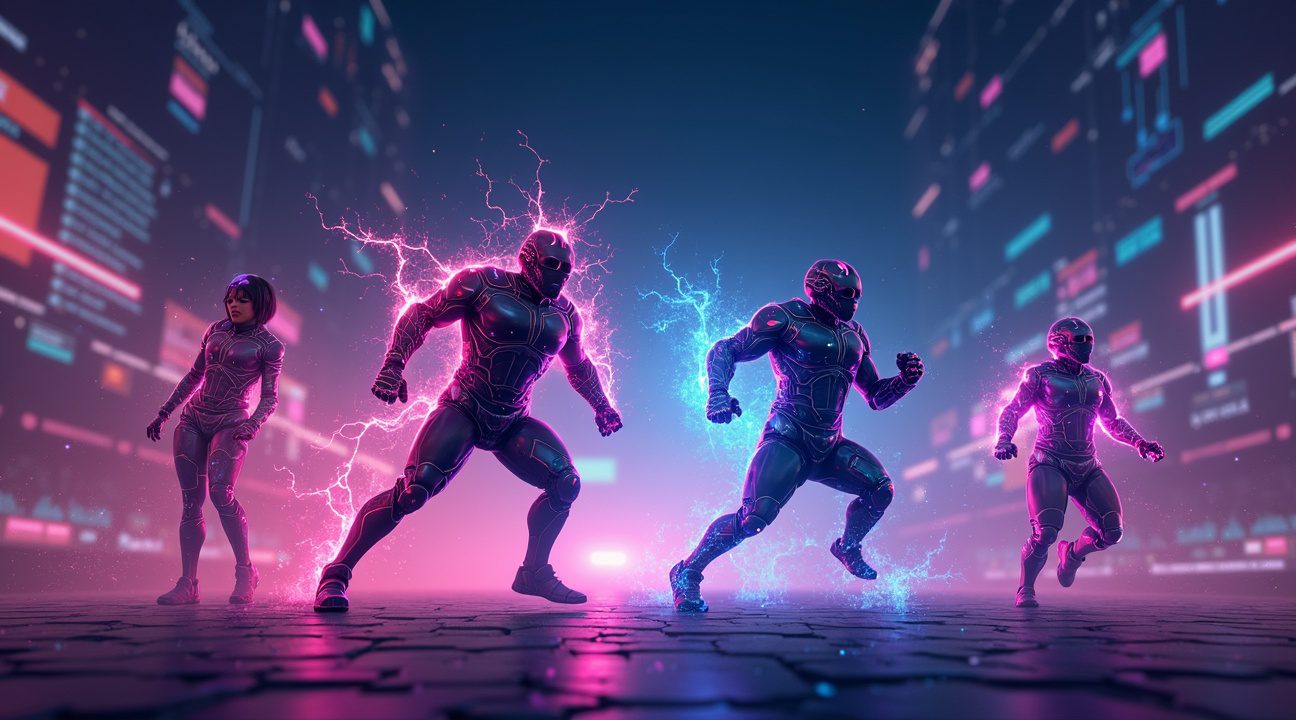
Game Publishers’ Marketing Revolution Through Platform Integration
Game publishers have fundamentally transformed their marketing strategies by embracing YouTube and Twitch as primary channels for game promotion and player engagement. These platforms now serve as essential discovery mechanisms where potential players first encounter new titles through streamers and content creators. Publishers recognize that traditional advertising can’t match the authentic engagement generated when popular creators showcase their games to dedicated audiences.
The shift represents a departure from conventional marketing methods, with publishers allocating substantial portions of their budgets to influencer partnerships and sponsored content. Major game launches now routinely feature coordinated campaigns across both platforms, where creators receive early access to generate buzz and demonstrate gameplay. This approach proves particularly effective because viewers witness genuine reactions and unfiltered gameplay experiences rather than polished promotional trailers.
Publishers have learned that restricting content access or imposing heavy limitations on streaming can backfire dramatically. When companies attempt to control how their games appear on these platforms, they often face reduced visibility and diminished fan interest. Content creators value creative freedom, and overly restrictive policies can lead to boycotts or reduced coverage that ultimately hurts game sales.
Community Building and Cultural Impact
YouTube’s influence extends far beyond simple game promotion, contributing significantly to social and cultural movements through community building and collaborative content creation. The platform enables creators to develop parasocial relationships with their audiences, where viewers feel genuine connections to their favorite gaming personalities. This phenomenon has created powerful marketing opportunities for publishers who partner with creators that align with their brand values.
Several key benefits emerge from this community-focused approach:
- Enhanced player loyalty through authentic creator endorsements and ongoing engagement
- Viral marketing potential when content resonates with specific gaming communities
- Real-time feedback loops that help publishers understand player preferences and concerns
- Cross-platform promotion opportunities that extend beyond gaming into lifestyle and entertainment content
- Long-term brand building through sustained creator partnerships rather than one-off advertising campaigns
However, this increased reliance on platform integration introduces significant risks that publishers must carefully manage. Creator controversies can damage associated brands, and the emotional influence these personalities wield over younger audiences raises ethical concerns about responsible marketing practices.
Publishers face the challenge of maintaining brand safety while leveraging the authentic engagement that makes platform integration so effective. Creator burnout and sudden departures can leave marketing campaigns without their key promotional figures, forcing companies to develop more diversified influencer strategies.
The gaming industry now operates under heightened scrutiny regarding content moderation and ethical influencer engagement. Publishers must establish clear guidelines for sponsored content while avoiding overreach that might alienate creators. Platform migration adds another layer of complexity, as creators sometimes move between YouTube and Twitch, requiring publishers to maintain relationships across multiple channels.
Brand responsibility has become paramount as publishers recognize their role in shaping gaming culture through platform partnerships. Companies increasingly vet potential collaborators for past controversies and establish codes of conduct for sponsored content. This careful approach helps protect both the publisher’s reputation and the broader gaming community from harmful content or misleading promotional practices.
The evolution continues as both platforms introduce new features and monetization models that affect how publishers approach marketing campaigns. Live streaming capabilities, interactive features, and emerging technologies like virtual reality create fresh opportunities for innovative promotional strategies while requiring constant adaptation to changing platform policies and audience expectations.
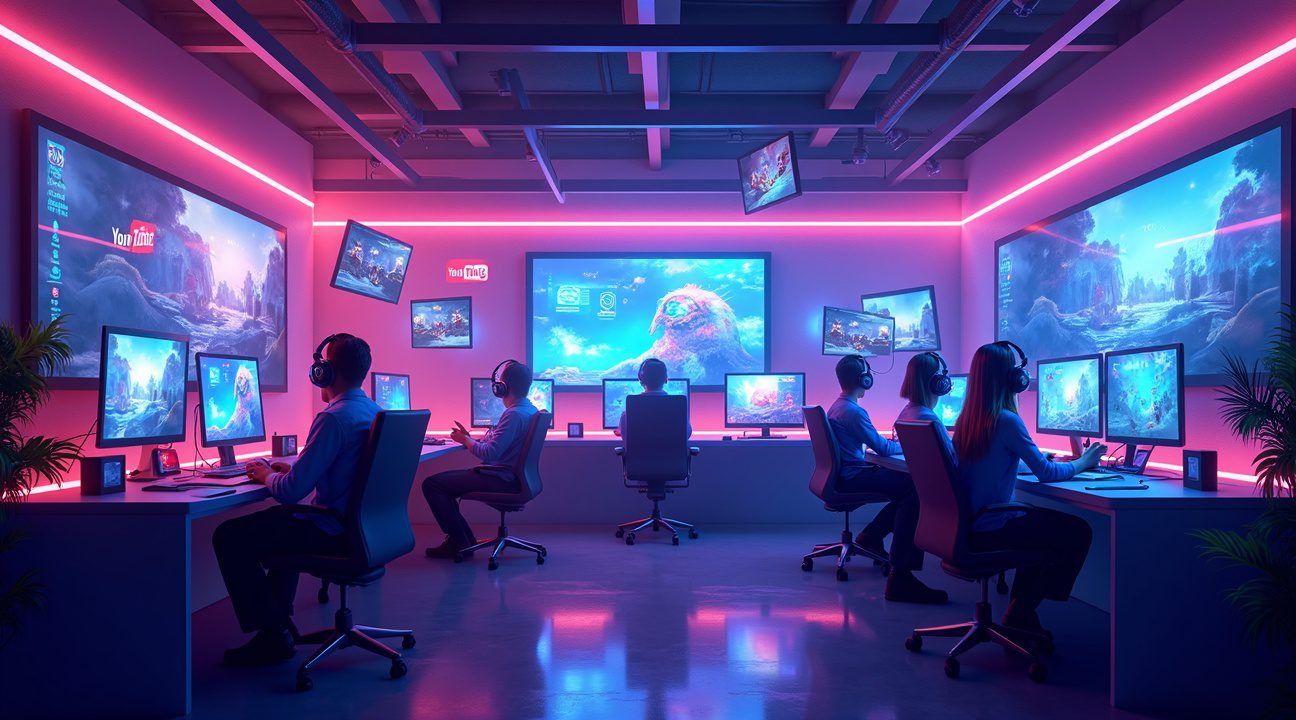
Sources:
MIDiA Research: “Gamers spend more time watching Twitch and YouTube than playing games”
Co-op Board Games: “Twitch Statistics [2025 Updated]”
Backlinko: “Twitch Usage and Growth Statistics: How Many People Use Twitch?”
Streams Charts: “Q1 2025 Livestreaming Stats: TikTok Surpasses Twitch”
Inkwood Research: “Impact of YouTube on the Gaming Industry’s Trends”
Statista: “Gaming video content worldwide – Statistics & Facts”

